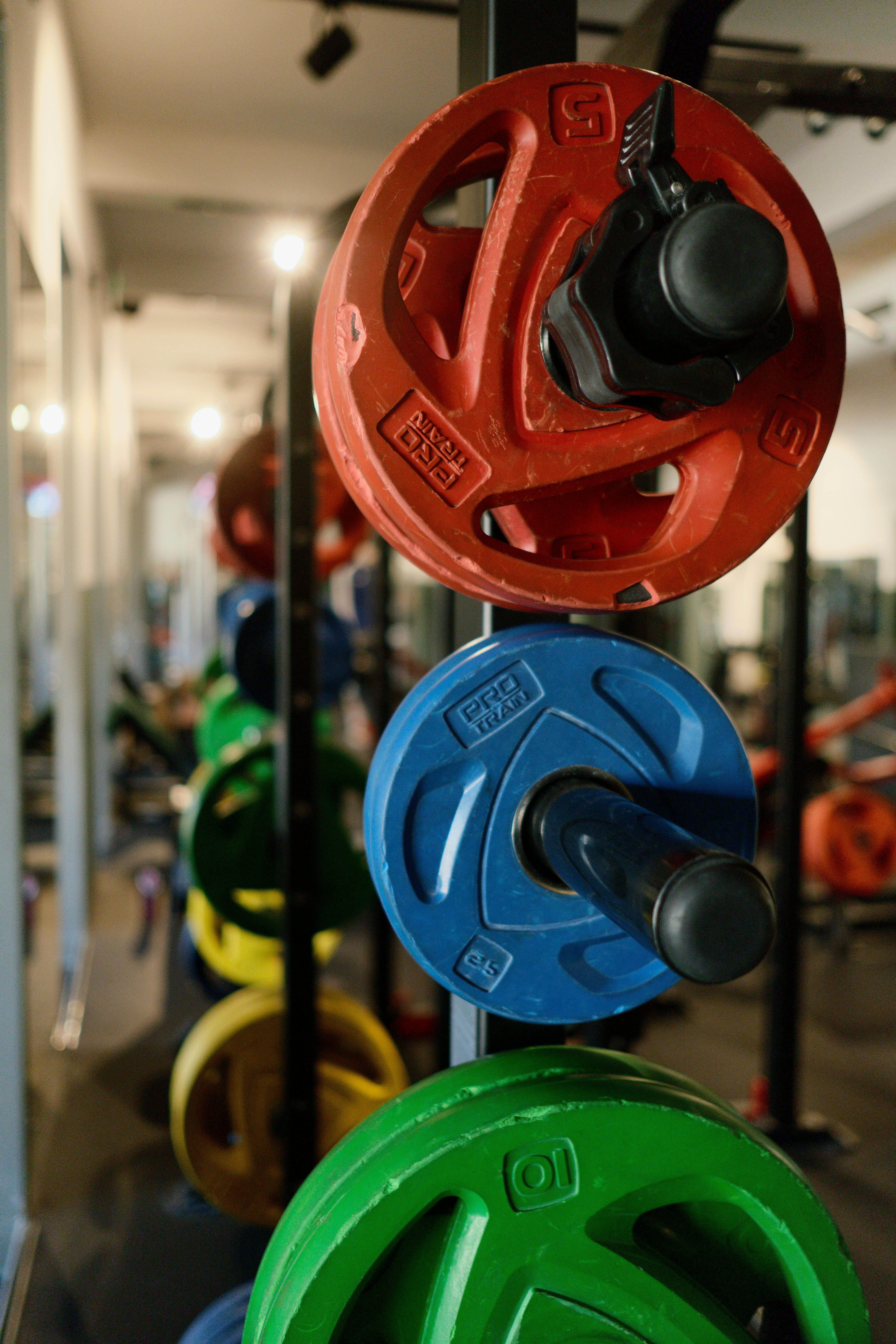Effective Ways to Optimize Langhantel Rückentraining for Modern Athletes in 2025
In the contemporary fitness landscape, optimizing your Langhantel Rücken Training is crucial for athletes aiming to enhance their performance and overall health. The focus on the back is not only about aesthetics but also about achieving a well-balanced physique, improving posture, and preventing injuries. This article delves into effective methods to refine your back training using barbell exercises, accommodating both beginners and advanced athletes.
Modern athletes increasingly understand the benefits of strengthening their Rückenmuskel (back muscles). These muscles play a vital role in various movements and sports, making their development essential for success. We will explore specific Rücken Übungen that can seamlessly integrate into your regular workout regimen.
Here, you’ll learn about:
- Essential Langhantel Übungen for building back strength
- Core strategies to enhance Rückenfitness
- Effective training plans for athletes
- Tips for preventing injuries
- Innovative techniques for maximizing results
Ultimately, you will gain insights into how to effectively utilize Langhantel Training to achieve your fitness goals while reinforcing a healthy back.
Essential Langhantel Übungen for Stronger Back
Building on the foundation of back training, let’s explore the essential exercises that utilize the barbell to strengthen your back muscles.
Langhantel Kreuzheben: The Core of Back Training
The Langhantel Kreuzheben (barbell deadlift) is a foundational exercise for any back training regimen. This compound movement engages major muscle groups, including the lower back, glutes, and hamstrings, promoting functional strength and stability. When performing the deadlift, ensure proper form: feet shoulder-width apart, grip the barbell firmly, and hinge at the hips while keeping your back straight.
Studies indicate that the deadlift is key for building overall body strength, which translates to improved performance in sports and daily activities. Furthermore, it can be particularly impactful for athletes focusing on Hyperextension Rücken (back extensions) as they cultivate resilience against injuries and enhance overall muscle endurance.
Langhantel Rudern: Targeting the Upper Back
When it comes to developing back width and strength, Langhantel Rudern (barbell rows) stands out. This exercise effectively targets the latissimus dorsi, which contributes to a broader physique. Maintaining a neutral spine while pulling the barbell towards your abdomen maximizes muscle activation.
The benefit of incorporating rows into your routine is not only aesthetics but performance enhancement. Improved upper back strength directly correlates with better posture and shoulder stability, aiding in various sports disciplines. Coaches often recommend integrating both variations—overhand and underhand grips—to target different aspects of the back.
Rückenstrecker: Adding Stability
Rückenstrecker (back extensions) are crucial for building endurance within the lower back musculature. By pulling the torso back while seated or using a hyperextension bench, you enhance lower back strength, promoting spinal health. These exercises are complementary to heavier lifts and prevent common injuries caused by weak back muscles.
Incorporating back extensions can significantly aid in Verletzungsprophylaxe Rücken (injury prevention) by facilitating overall core stability. This is essential not just for athletes but for anyone engaging in physical activity.
Effective Strategies for Enhancing Rückenfitness
With these foundational exercises established, we can now transition into strategies that further enhance Rückenfitness, ensuring comprehensive training success.
Progressive Load Management
One of the most effective methods to enhance back training is to focus on progressive overload. This principle involves gradually increasing the weight or resistance in your workouts to continuously challenge your muscles. Keeping track of your lifting intensity using a Langhantel Feedback Training system can help monitor progression and adjust your training load accordingly.
As athletes, it’s essential to understand that your body adapts over time, meaning weights that once provided resistance will eventually become manageable. Hence, consistently challenging your back muscles ensures ongoing development and prevents plateauing in strength gains.
Incorporating Variability in Training
To maintain engagement and continuously push for improvements in your training outcomes, incorporating a variety of Langhantel Übungen is vital. Variations, such as different gripping techniques and stances, can significantly influence muscle activation across the back musculature.
For example, alternating between traditional deadlifts and deficit deadlifts or adjusting your grip during rows can engage different muscle fibers and stimulate new growth. This not only aids in muscle development but also keeps the training routine exciting.
Focus on Recovery and Nutrition
Finally, recovery plays a critical role in optimizing any training regime, especially in a strength-focused program. Adequate rest, hydration, and targeted nutrition enhance recovery times and promote overall performance.
Incorporating high-quality protein sources post-workout helps replenish muscle glycogen and facilitates muscle recovery, ultimately maximizing muscle growth during your Krafttraining Rücken sessions.
Creating a Personalized Rückentraining Plan
Transitioning from exercise strategies to creating a tailored Rückentraining plan is essential for achieving specific fitness goals.
Determining Your Fitness Goals
Your first step in creating a personalized training plan is clearly defining your fitness goals. Whether your focus is on muscle hypertrophy, endurance, or functional strength, your plan must be customized accordingly. For example, if your goal is to enhance Rückenbreite (back width) and muscular endurance, your program might center around higher repetitions with moderate weights.
Weekly Structuring of Workouts
Once your goals are established, structuring your weekly workout sessions for Langhantel Rücken Training will enhance effectiveness. Aim to incorporate back-focused workouts at least twice a week, allowing ample time for muscle recovery. Each session should include a mix of compound lifts, isolation exercises, and accessory movements.
Monitoring Your Progress
To stay on track, log performance metrics and progress throughout your training. This data will not only empower you to see how far you’ve come but also adjust your training as necessary. Utilizing tools and technology for Langhantel Tracking-Systeme can provide insights on rep counts, weights lifted, and even form adjustments.
Common Mistakes to Avoid in Rücken Training
As crucial as it is to implement effective strategies, avoiding common pitfalls in Rückentraining is equally important. By recognizing and correcting these errors, you will ensure safer and more productive workouts.
Poor Technique and Form
One of the most frequent mistakes amongst athletes is neglecting proper technique during exercises. Compromising form can lead to unnecessary strain on the back, increasing the risk of injury. Always focus on maintaining a neutral spine, engaging your core, and executing slow, controlled movements.
Neglecting Warm-Ups and Cool-Downs
Skipping warm-ups and cool-downs is another common error. Engaging in dynamic warm-up exercises prepares your muscles and joints for the workload ahead, promoting better performance. Conversely, cooldowns followed by stretching help to release tension and enhance recovery timing.
Not Allowing for Adequate Recovery Time
Overtraining without sufficient recovery is counterproductive and harmful. Ensuring you rest muscle groups adequately will not only prevent injuries but also lead to significant gains in strength and muscle size. Depending on your fitness level, at least 48 hours of recovery for trained muscle groups is recommended.
Injury Prevention Strategies for Safe Rückentraining
Having discussed effective training and common mistakes, let’s delve into the best practices for injury prevention.
Rückenverletzungen Vermeiden
Implementing targeted warm-ups, such as mobilization exercises, prepares your back for the work ahead, reducing stiffness and the likelihood of injury. For instance, gentle dynamic stretches focused on the spine can increase blood flow to the muscles.

Prioritize Form and Weight Selection
As with any weight training regime, selecting an appropriate weight is crucial. Training with a weight that allows for clean, controlled movements is imperative for your safety and success in achieving fitness goals. Regularly reassess your capabilities and adjust accordingly, keeping in mind that lifting heavier does not equate to better training.
Use of Supportive Gear
In many cases, the incorporation of supportive gear such as weightlifting belts during heavy lifts can reduce strain on the lower back and enhance stability. However, use this gear judiciously, as dependency can lead to weakened muscles over time.
Innovative Techniques and Future Trends
As we look towards the future, it’s essential to understand innovative techniques and trends in Rücken Training.
Integrating Technology in Training
The role of technology in fitness is ever-growing. Utilizing smart devices to monitor performance metrics can provide valuable feedback on your progress over time. Consider investing in smart fitness equipment that offers features like resistance adjustments and form feedback.
Focus on Mental and Physical Health
Muscle training is intricately linked to mental well-being. Incorporating practices such as mindfulness while lifting can enhance focus and performance. Education on psychosoziale Dimensionen des Rückentrainings (psychosocial dimensions) can help in understanding the broader benefits of back training for athletes.

Exploring Alternative Modalities
Lastly, alternative training methods are emerging, including recovery modalities such as yoga and Pilates for enhancing flexibility and mobility in the back. Incorporating these practices with traditional weight training can provide holistic benefits to athletes.
Conclusion: Achieving Back Health and Performance
In conclusion, optimizing your Langhantel Rücken Training is no longer just about heavy weights. Remember that a comprehensive approach that includes technique, individualized programming, adequate recovery, and innovative resources will yield the best results. Tailoring your workouts around these principles will not only strengthen your back muscles, enhance mobility and posture, but also contribute positively to your overall athletic performance.
For more information on comprehensive fitness strategies, visit this guide or delve deeper into additional topics related to fitness and health.
